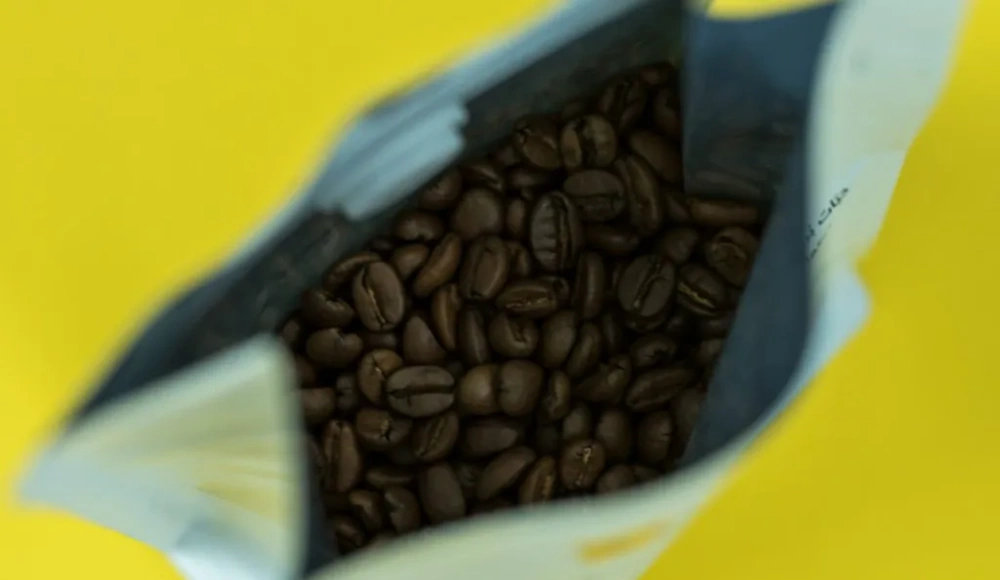Degassing coffee is crucial for getting the best flavor from freshly roasted beans. You might think that the fresher, the better, but brewing beans too soon after roasting can lead to a dull, bitter cup. This happens because the carbon dioxide (CO2) trapped inside the beans needs time to escape.
In this article, we’ll explore why degassing coffee matters, how long you should wait after roasting, and how it impacts your coffee’s taste and brewing process.
What is Degassing Coffee?

Degassing coffee refers to the process where freshly roasted coffee beans release carbon dioxide (CO2), a gas produced during roasting. While some CO2 escapes immediately, most is gradually released over time.
This is essential for achieving the best flavor and brewing quality. For coffee roasters, controlling the degassing process ensures that the beans remain fresh, aromatic, and balanced. Brewing coffee too soon after roasting, while still full of CO2, can lead to uneven extraction, affecting the taste.
On the flip side, over-degassing can make the coffee taste flat and stale. A well-timed degassing process allows coffee to reach its peak flavor potential, delivering a smoother, more enjoyable brew.
Importance of Coffee Degassing

Coffee degassing is crucial for achieving the perfect flavor profile. Freshly roasted coffee contains high levels of CO2, which, if brewed too soon, disrupts extraction, leading to uneven flavor.
Roasters must ensure beans degas adequately, allowing the CO2 to escape and the coffee to stabilize. This process helps develop the balanced, aromatic flavors roasters intend, creating a superior cup of coffee for consumers.
Enhances Flavor:
Proper degassing is essential for unlocking a well-balanced flavor profile. Without sufficient degassing, freshly roasted coffee can be overly acidic or sour, ruining its potential for a smooth and rich taste. By allowing CO2 to escape, you give the coffee a chance to develop its true, nuanced flavors.
Prevents Uneven Extraction:
Degassing helps avoid issues like uneven extraction during brewing. When coffee is brewed too soon after roasting, the residual CO2 can disrupt the interaction between water and coffee grounds, leading to a less even extraction. This results in a bitter or weak cup. Waiting until the CO2 stabilizes allows for a more even, flavorful brew.
Improves Aroma:
The natural aroma of coffee is tightly linked to the degassing process. When CO2 is trapped inside the beans, it prevents the full spectrum of aromas from being released. Allowing coffee to degas helps open up the fragrance, making it richer and more inviting. A fresh, aromatic cup of coffee is key to the whole coffee experience.
Preserves Freshness:
Freshly roasted coffee is full of CO2, which can quickly cause the beans to lose their freshness if not released properly. By degassing before brewing, coffee retains its vibrant flavor and aroma, ensuring it doesn’t go stale prematurely. This process helps keep your coffee tasting fresh longer, even after packaging.
Increases Shelf Life:
Proper degassing, combined with packaging that features one-way valves, helps extend the shelf life of coffee. These valves allow CO2 to escape without letting air in, preserving the freshness of the beans. For coffee roasters, this means their product stays at its best for longer, reducing waste and improving customer satisfaction.
Prepares Coffee for Brewing:
Coffee that has undergone proper degassing is ready for optimal extraction. When brewed too soon, excess CO2 can negatively impact the flavor, leading to under-extraction or over-extraction. Allowing the coffee to rest ensures it’s primed for the best brewing results, whether using an espresso machine, French press, or pour-over method.
Supports Consistent Quality:
For roasters, managing degassing time ensures they consistently deliver high-quality coffee. By educating consumers on the importance of waiting for the right degassing period, roasters can ensure their coffee is consumed at its peak. This leads to satisfied customers and more repeat business.
How Long Does it Take for Coffee to Degas?

The ideal degassing time for coffee typically ranges from 3-5 days to 2 weeks, but it depends on factors like roasting, processing, and brewing method. For immersion or drip brews like pour over or French press, coffee can be used within a couple of days after roasting due to longer water contact.
For espresso, it’s essential to let the coffee rest for at least 5 days to a week, as the shorter brew time makes every second of contact crucial. Natural processed coffees and lighter roasts need more time to degas than washed or dark roasts, which release gas more quickly.
Key Factors in Coffee Degassing Time
Several factors influence the degassing process and can affect how fresh and flavorful your coffee is. Roasters and consumers alike must consider these elements to ensure coffee is enjoyed at its best.
Whole Bean vs. Ground Coffee:
Whole beans have a smaller surface area, which leads to slower CO2 release and a longer degassing time. Ground coffee, with its larger surface area, releases CO2 much faster and loses freshness more quickly. Packaging that can manage this CO2 release, such as one-way valves, helps preserve the coffee’s freshness for both whole beans and ground coffee.
Roast Profile:
The roast profile plays a crucial role in degassing time. Dark roasts, which undergo high-heat roasting, have a more porous structure, accelerating CO2 release. These beans degas quickly, and if not given proper rest time, they may develop stale flavors. Lighter roasts, roasted at lower temperatures, hold onto more CO2 and require a longer degassing period to balance out the flavor.
Coffee Variety:
The coffee variety also determines how long it needs to degas. Washed coffees typically take 7-8 days to reach optimal CO2 levels, helping the flavor settle into a balanced profile. Natural coffees, due to their drying process inside the cherry, contain more retained gases and often require up to two weeks to degas properly.
This variation means roasters need to adjust their packaging methods accordingly to preserve the distinct characteristics of each coffee type.
Processing Method:
Coffee processing—whether washed or natural—affects the degassing time. Washed coffees generally degas more quickly, resulting in a cleaner flavor profile. Natural coffees, where the beans are dried with the cherry still intact, take longer to degas due to higher moisture content and retained CO2.
Managing this degassing time is crucial, and packaging solutions like coffee pouch with valve help control the release of gases, preserving freshness and flavor.
Why Waiting is Important?
Degassing is an essential process that greatly affects coffee’s flavor and brewing quality. By allowing coffee to rest after roasting, you help it reach optimal CO2 levels, ensuring a smoother, more balanced cup. Here’s why waiting is crucial:
Impact on Brewing
Brewing freshly roasted coffee too soon can result in uneven extraction. CO2, still trapped inside the coffee beans, disrupts the contact between water and coffee grounds. This leads to inconsistent extraction, where the water may not extract the full range of flavors from the coffee. As a result, the brew might taste under-extracted, weak, or unbalanced.
For methods like espresso, where brew time is short and precise, allowing 5-7 days for degassing ensures the CO2 doesn’t interfere with the extraction process. For pour-over or French press, waiting just a couple of days is sufficient due to longer water contact. By adjusting waiting times according to brewing methods, you help ensure a more flavorful, even cup.
Flavor Profile Development
Waiting for coffee to degas improves the overall flavor profile. During degassing, volatile compounds and excess CO2 are released, allowing the coffee’s natural flavors to emerge. Coffee that hasn’t had sufficient time to degas may taste overly sour or acidic, as the excess CO2 can result in an imbalanced, harsh taste.
Roasters should guide consumers on the optimal waiting time for each coffee type. By educating customers on these details, roasters can help them get the best possible flavor out of their coffee.
Keeping Your Roasted Coffee Fresh
In The Coffee Roaster’s Companion, Scott Rao explains that during the first 12 hours after roasting, coffee beans have high internal pressure, which prevents oxygen from entering their structure. After this period, the risk of oxidation increases, causing the coffee to become stale and lose its delicate flavor notes.
When coffee is stored in a container with less than 1% oxygen, its freshness and shelf life are significantly extended. However, an airtight container presents its own challenge—while coffee continues to release CO2, it has no way to escape. This can lead to packaging rupture, especially if the coffee travels long distances from the roastery to the consumer or café.
Luckily, specialty coffee roasters have solutions to allow coffee to degas without exposure to oxygen. The most popular method is using a degassing valve on coffee bags. This one-way valve releases CO2 while preventing oxygen from entering, preserving the coffee’s freshness and flavor for up to two weeks—perfect for small-batch roasters.
Degassing valves are typically made up of five components: a cap, an elastic disc, an adhesive layer, a polyethylene plate, and a paper filter. They can be either visible on the outside of the packaging or hidden inside its layers.
At BN Pack, we offer BPA-free, recyclable degassing valves that can be added to compostable or recyclable packaging, ensuring a sustainable coffee bag. This can be done either during the manufacturing process or at a later stage.
For longer storage, freezing coffee beans is another effective method. Scott Rao suggests letting the coffee degas until it reaches its optimal CO2 level, then vacuum-sealing it and freezing it. He mentions that even after six months of freezing, the coffee still tastes fresh when defrosted.
The National Coffee Association recommends using a truly airtight container for freezing beans and removing only the amount needed for a week at a time to avoid condensation buildup on the frozen coffee.
Coffee consumed too soon after roasting may have a strong aroma but lacks a rounded flavor and often tastes astringent. If coffee exceeds its optimal CO2 level, its flavors become flat and lose intensity.
For specialty coffee roasters, providing clear roast and consume-by dates, as well as features like degassing valves, can help ensure customers experience fresh, flavorful coffee.
Recommended products
Conclusion
Degassing Coffee is crucial for achieving the best flavor and aroma. Waiting the right amount of time allows CO2 to dissipate, leading to smoother, more balanced coffee. For roasters, selecting flexible coffee packaging that allows for proper degassing, like one-way valves, ensures freshness.
At BN Pack, we offer customizable coffee packaging solutions, from coffee bag stickers to coffee pakaging types, to help maintain freshness and aroma, ensuring every cup is brewed at its best.
For custom packaging solutions, quote from BN Pack today and keep your coffee fresh.




